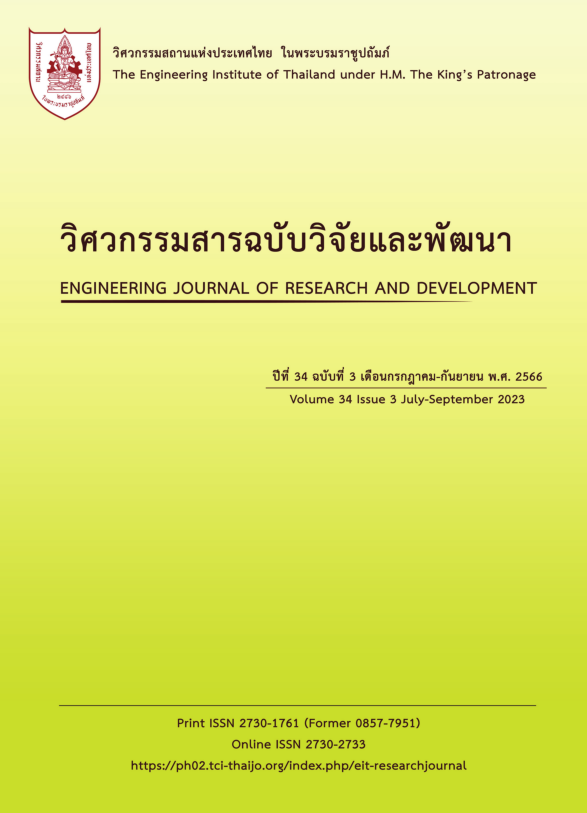A STUDY OF HYBRID STRIP ADJUSTMENT BETWEEN UAV LIDAR POINT CLOUD AND STRUCTURE-FROM-MOTION POINT CLOUD
Main Article Content
Abstract
Laser scanning as know as LiDAR can produce point cloud for creating high resolution and high-accurate digital elevation model. Nevertheless, after a lidar mission, the point clouds from two adjacent flightlines in the overlapping area were found that there are discrepancy in height in the range of 5 – 20 centimeters. Therefore, these point cloud data needs to be treated e.g. via strip adjustment by hybrid processing in such a way that aerial photogrammetric block co-flight with laser scanning will first processed and be used to produce control features for later strip adjustment. The aerial images are organized for bundle block adjustment (BBA) using photogrammetric computer vision (PCV), together with the ground control points for improving accuracy. While doing the BBA, the key points will be produced from the image matching and lead to point cloud densification by multiple-view geometry of aerial images in Structure-from-Motion (SfM) technique. The SfM point cloud will be used to create tie-line for LiDAR strip adjustment to reduce those discrepancies. Nevertheless, the inadequate density of LiDAR point cloud (5 - 10 point/sqm), it is difficult to adjust the horizontal discrepancies and the drift of attitude. So, only the height discrepancies will be adjusted. In this research there are has two types of strip adjustments, the first one is the strip adjustment of LiDAR point cloud not using SfM point cloud and the second is the strip adjustment LiDAR point cloud using SfM point cloud. The research’s result was found that the unadjusted LiDAR point cloud has RMSEZ at 8.3 centimeters, the strip adjustment of LiDAR point cloud not using SfM point cloud has RMSEZ at 9.2 centimeters and the strip adjustment of LiDAR point cloud using SfM point cloud improve the height accuracy upto RMSEZ of 7.4 centimeters. So it can be concluded that the hybrid processing between UAV LiDAR mapping and aerial photogrammetric block could help improving vertical positioning accuracy of this LiDAR point cloud block.
Article Details

This work is licensed under a Creative Commons Attribution-NonCommercial-NoDerivatives 4.0 International License.
The published articles are copyright of the Engineering Journal of Research and Development, The Engineering Institute of Thailand Under H.M. The King's Patronage (EIT).
References
Srirattanapaisarn, T. RTSD Unmanned Aerial Laser Scanner. Royal Thai Survey Department Journal, 2020. pp. 12-28.
Xiong, B., S. Oude Elberink. and G, Vosselman. Building Model From Noisy Photogrammetric Point Clouds. ISPRS Technical Commission III Symposium, 2014, Volume II-3.
Do, P.N.B. et al. A Review of Stereo-Photogrammetry Method for 3-D reconstruction in Computer Vision. 19th International Symposium on Communications and Information Technologies (ISCIT), 2019.
Strecha, C. The rayCloud–a vision beyond the point cloud. 2014.
Glira, P. Hybrid Orientation of LiDAR Point Clouds and Aerial Images, in Department of Geodesy and Geoinformation.
TU Wien: Austria, 2018.
Pfeifer, N. Airborne Laser Scanning Strip Adjustment and Automation of Tie Surface Measurement, 2005.
Santitamnont, P. Digital photogrammetry. Bangkok, 2021.
Ye, N. et al. Accurate and dense point cloud generation for industrial Measurement via target-free photogrammetry. Optics and Lasers in Engineering, 2021, Volume 140.


